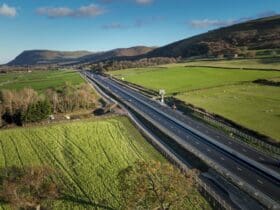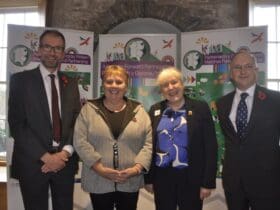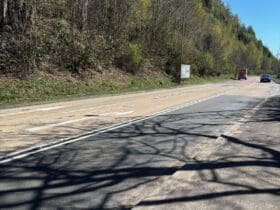Vivacity Labs, the London-based transport technology scaleup, today announced its partnership with Monmouthshire County Council to deploy Vivacity Labs’ sensors in Monmouthshire towns to better understand traffic flow and travel patterns for vehicles, cyclists and pedestrians.
With Abergavenny’s existing one-way traffic system a barrier to active travel, the recently installed contraflow cycle lane in the town centre allows cyclists to take a direct route across town, avoiding the A40. Alongside making the area safer for cycling, granting cyclists two-way travel makes navigating Abergavenny by bicycle more efficient than by car, which will incentivise further modal shift, reducing congestion and improving air quality in the area.
Vivacity Labs’ sensors, which use artificial intelligence and machine learning to capture anonymous data 24/7 on transport modes, traffic flow and travel patterns, have been installed across the area to monitor whether cycling has become more popular as a result of the cycle lane. The data will also capture whether vehicle speed has reduced as a consequence of narrowing road space to accommodate the cycle lane.
A spokesperson for Monmouthshire County Council said: “The new contraflow cycle lane has transformed the way local residents travel. Not only has it reduced congestion in the town, but it’s made cycling accessible and safer for local residents. We’re now looking forward to reviewing the data insights that Vivacity Labs has collected in order to assess uptake in the long term and roll out new initiatives to promote active travel.”
Mark Nicholson, CEO and Co-Founder at Vivacity Labs, added: “We’re proud to be partnering with Monmouthshire County Council to reimagine travel across the region. We know that cycling is a healthy, sustainable mode of transport. However, without the right infrastructure it’s not always a safe or practical option. Our accurate, anonymous AI data insights will help the local council to monitor the success of this scheme and make well informed decisions on future infrastructure.”









Leave a Reply
View Comments